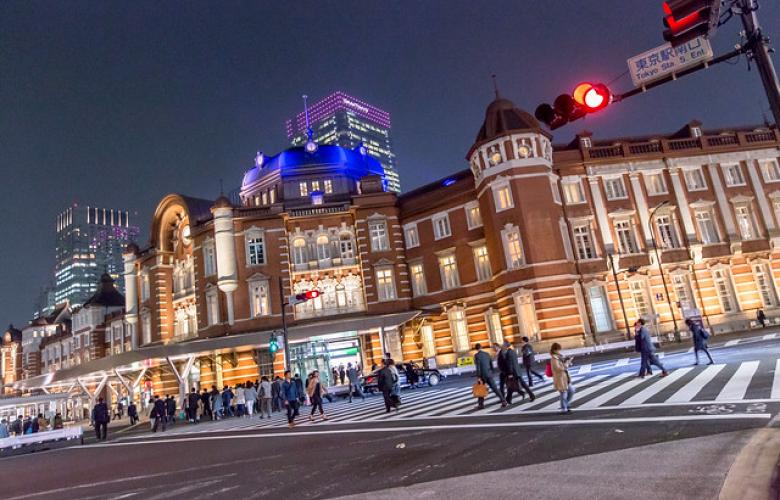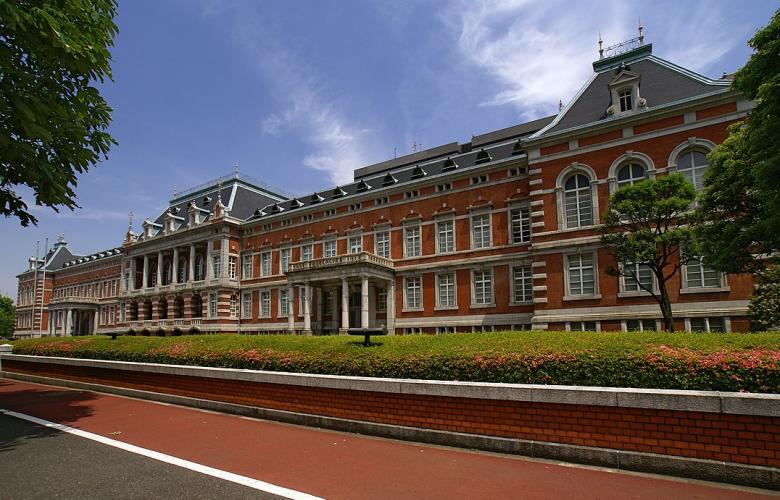Found in many of Japan’s major cities, red brick buildings have a distinct Western style that was found in continental Europe, London or New York around the turn of the last century. Red clay bricks, often adorned with white quoins (corner stones), give them their typical charming appearance. Government buildings and other public properties were built in this style during the late Meiji (1868–1912) and Taisho (1912–1926) eras. And while European in appearance, the bricks of the buildings in Tokyo were in fact burned from clay from the Tone River that flows through the Kanto Region, where the capital is located.
Why does Japan have them?
In fact, they style was first introduced to the Meiji government by two German architects, Wilhelm Böckann and Hermann Ende. The Meiji revolution saw Japan abolish its feudal system and with it, also the old ways and culture. As the Meiji government was turning its back on old Japanese culture, it was looking for new inspiration, and embraced Western culture in many ways. This ranged from modelling the Japanese legal and medical system on the German and French ones, to Victorian fashion becoming en vogue with the upper classes. The government turned to the European architect duo — Böckmann and Ende — with a vision of redesigning Tokyo as a grand and modern capital. The plans included public parks, squares and government buildings in the style of those found in Europe at the time, heavily relying on brick as the main building material.
However, Böckmann and Ende lamented that they could not find enough bricks for their ambitious plans of the new Tokyo Station that required more than 8 million of them. Brick production was still in its infancy in Japan at the time and they declined to accept bricks from different origins, as they feared the patchwork appearance of the resulting structure would take away from the splendour they envisioned. In the end, the building was finished many years later, after the architects had already left Japan again. However, the trend was set and spread from the capital to Hokkaido, where a number of red brick buildings have been preserved and can still be seen today, namely in Sapporo, Hakodate, and Otaru.
Eventually, the style fell out of fashion, as more flexible materials that can withstand the pressure of frequent earthquakes were favoured.
Notable examples
When the Marunouchi area, which surrounds Tokyo Station, was first opened to house Japanese companies in modern office buildings, its original plans were modelled on the streets in London and slated to be built completely in red brick and white quoin style. The only — and most impressive —preserved building from the early plans is the Tokyo Station building.
It has been completely remodeled in a large-scale redevelopment project in 2012. The old, picturesque structure has been revived and infused with the conveniences of a modern train station alongside shopping malls. Parts of the old walls have been preserved for historical purposes and can be viewed by visitors. On the outside, the historical station building with a backdrop of Tokyo’s central business district is one of the city’s most photographed buildings. On the inside, it is a great destination for souvenir shopping and dining. Tokyo Station is located on the JR Chuo and Yamanote Lines and the Metro Marunouchi Line.
Yokohama’s Red Brick Warehouse, called Yokohama Akarenga Soko in Japanese, is another iconic building from the same area. It lacks the decorative white quoins as it was originally designed as storage for the port, but has now been turned into a high-end shopping mall with stores selling selected fashion, art and interiors. Several areas are dedicated to cafes and restaurants and all areas are connected via glass and steel staircases and escalators, adding a modern touch to the old warehouses. The Akarenga Building can be reached via Sakuragicho Station on the JR Negishi Line in Yokohama. From here, it is about 15 minutes on foot. Another option is to get off Nihon-odori Station on the Minato Mirai Metro Line and walk for about 6 minutes.
Another example is the Ministry of Justice building, designed by Böckmann and Ende themselves. It houses the ministry’s museum, library, and research and training facilities. Visitors to the museum can enter for free. It is located in Chiyoda ward, and is a 3-minute walk from Kasumigaseki Station on the Marunouchi, Chiyoda, or Hibiya Line.
By Mareike Dornhege
Similar to this:
From swamp to swanky: The history of Tokyo's Marunouchi district
Uniquely Tokyo: 10 buildings you couldn't imagine anywhere else
The architects of success: Behind Tokyo's famous landmarks







